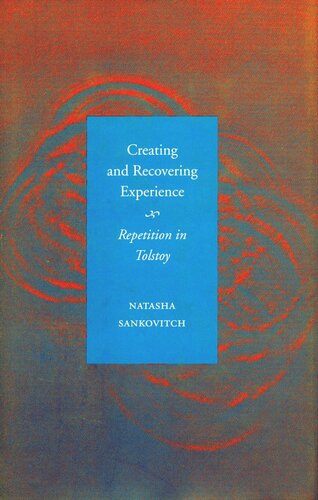

Most ebook files are in PDF format, so you can easily read them using various software such as Foxit Reader or directly on the Google Chrome browser.
Some ebook files are released by publishers in other formats such as .awz, .mobi, .epub, .fb2, etc. You may need to install specific software to read these formats on mobile/PC, such as Calibre.
Please read the tutorial at this link: https://ebookbell.com/faq
We offer FREE conversion to the popular formats you request; however, this may take some time. Therefore, right after payment, please email us, and we will try to provide the service as quickly as possible.
For some exceptional file formats or broken links (if any), please refrain from opening any disputes. Instead, email us first, and we will try to assist within a maximum of 6 hours.
EbookBell Team

0.0
0 reviewsThe thesis of this book is that repetition is central to Tolstoy's art. The author argues that Tolstoy uses this device—or rather, complex of devices—to represent and examine the processes by which people structure and give meaning to their experience. Repetition is shown to be essential to his style, to his understanding of characters' psychology, to the structure of his work, and to his interaction with readers. In short, it defines much of what is "Tolstoyan" about Tolstoy. Following a discussion of the epistemological and psychological beliefs that shape Tolstoy's use of repetition, the author explores the effects and implications of repeated verbal elements as they function in the discourse of characters and narrators. She develops a concept of "novels of length," which are distinguished from ordinary "long novels" in that length is essential to their themes and purposes. A complex dynamic of memory, forgetting, and reminders (repetition) structures both the characters' evolving identities and the readers' changing apprehension of the text. The author next discusses Tolstoy's use of repetition to shape relationships among characters, and considers the connection between these relationships and thematic development in his novels. She concludes by exploring the intertextual repetitions in Tolstoy's oeuvre, which are seen as part of a process by which allusions among works create a revealing sense of the author's developing career. In examining the link between Tolstoy's repeated verbal elements and his broader concepts of structure and meaning, the book combines close readings of key passages in the novels with an exploration of larger theoretical issues: the dynamics of reading and sense-making, the ethics and aesthetics of memory, and the function of language as a system of cognition and communication. As a result, the book contributes not only to studies of Tolstoy and the genre of the novel but to our understanding of the relations among rhetorical, cognitive, aesthetic, and ethical aspects of great art generally.